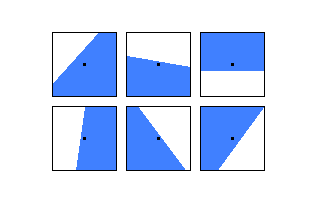That is why we need a good amount of AA subpixels. AA used in realtime games is not invented to smooth extremely small triangles. To have extreme small triangles is not the typical case. To antialias a heavily undersampled checkerbox pattern does not represent the normal case. In the special case of an undersampled checkerbox pattern, blurring helps to get rid of some noise. But a smooth result with heavy undersampling is – imho – only one given test case. In other cases, AA without smoothing delivers a result which I would describe as "better".arjan de lumens said:As you can see, the sine wave is not remotely close to gone, it is just aliased down to another frequency.
Yes, bilinear upsampling leads to numerous artifacts. Still, we have to interpolate data. Linear interpolation looks not very good, but filters with higher orders making additional assumtions about the content.arjan de lumens said:If the color values in your pixmap are fully independent everywhere in the entire picture, then you have a picture that contains nothing but random noise. A human-recognizable feature in a picture generally relies on a fairly large region around any given pixel; upon upscaling an image, you would ideally wish to take an entire such "region" into consideration in order to reproduce the feature as faithfully as possible. As such, it should be rather clear that you can do much better than just plain bilinear. This is in particularly true if the amount of upsampling done is very large (an "ideal" algorithm would in this case probably just look blurred as if it is seriously out of focus; a bilinear-filtered upsampling will be chock full of highly unrealistic Mach bands everywhere.)
I try to find criteria independent of personal taste. Now I will have to do some research before I post again.MfA said:Nysquist is irrelevant, as are sinc filters ... there are no ideal reconstruction filters. That's the wonderfull thing about image processing for the purpose of display, it's more of an art than a science.
Last edited by a moderator:



